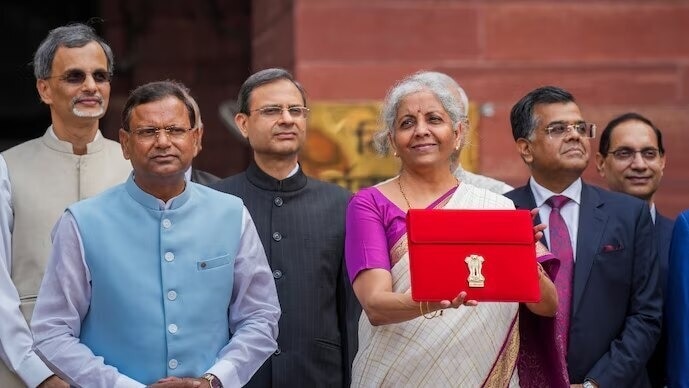Budget 2025: FM Nirmala Sitharaman is gearing up to present the Union Budget 2025 on February 1, 2025, six months after unveiling the full budget of the Modi 3.0 regime. Taxpayers are eagerly awaiting potential reductions in tax rates and higher exemption limits in the face of high inflation and changing consumption trends.
With the increasing cost of living and shrinking disposable incomes, the focus is on the New Tax Regime advocated by the current government. Experts are advocating for the inclusion of HRA, enhancements to Section 80C tax deductions, and a standard deduction of Rs 1 lakh in Budget 2025.
Standard Deduction
The Union Budget 2020 introduced the New Tax Regime, an alternative to the existing system, aimed to simplify the tax structure. This regime offers lower tax rates against the removal of certain exemptions and deductions available in the old regime, such as the standard deduction and home rent allowance (HRA).
The provisions regarding standard deduction for salaried employees is available under both Old and New Tax regime. Under both tax regimes, a Standard Deduction of Rs 50,000 is permitted for all salaried employees, irrespective of their gross salary income, those opting for Old Tax Regime. This also applies to pensioners.
In Budget 2024, FM Sitharaman increased the standard deduction for salaried individuals to Rs 75,000 under the New Tax Regime.
“With the well-awaited Budget 2025, the salaried individuals would be expecting some relief to the tax costs they bear on the salary income. With the introduction of the New Tax Regime in recent years, in the 2024 budget, the Hon’ble Finance Minister (FM) announced the allowability of an increased standard deduction of Rs 75,000 per annum for those who opt for New Tax Regime as against INR 50,000 per annum who opt for Old Tax Regime. Owing to the inflation and increase in prices in both transport and medical since FY 2018-19 since the time standard deduction was reintroduced, the Hon’ble FM should look at bringing in parity for those opting for either the Old or the New Tax Regime and increase the standard deduction to a minimum of INR 1.20 lakhs a year. This would seem practical as any salaried taxpayer would be incurring INR 10,000 a month / INR 1.20 lakhs a year collectively towards transport and medical expenses,” said Santhosh Sivaraj, Partner, Global Employer Services, Tax & Regulatory Services, BDO India.
In FY 2005-06, the standard deduction was removed, but it was reinstated in the 2018 budget by the Late Hon’ble FM, Arun Jaitley. In his budget speech, he announced a standard deduction of Rs 40,000/- for salaried taxpayers, replacing the previous exemptions for transport allowance and medical expenses.
As per the 2018 budget speech, Jaitley said: “To provide relief to salaried taxpayers, I propose to allow a standard deduction of Rs 40,000/- instead of the present exemption regarding transport allowance and reimbursement of miscellaneous medical expenses. ……. Apart from reducing paperwork and compliance, this will help middle-class employees even more in reducing their tax liability…”
Section 80C
Individuals can potentially decrease their taxable income by investing in certain financial instruments or making qualified expenses, with a maximum deduction of Rs 1.5 lakh. Section 80C of the Income-Tax Act, 1961, is a popular choice for taxpayers seeking to reduce their tax liabilities. This section covers a range of savings and investment opportunities, such as contributions to LIC and PPF.
Investments under Section 80C
Taxable income
Under Section 80C, individuals and Hindu Undivided Families (HUFs) can avail of a deduction that reduces their taxable income. However, companies, partnership firms, and Limited Liability Partnerships (LLPs) are not eligible for this deduction. The maximum deduction that can be claimed under Sections 80C, 80CCC, and 80CCD(1) combined is Rs 1.5 lakh.
Individuals seeking to further reduce their taxable income can claim an additional deduction of Rs 50,000 under Section 80CCD(1B). This allows for additional benefits and further reduction of taxable income.
Provident Funds
Investing in Provident Funds such as Employees’ Provident Fund and Public Provident Fund can also help lower taxable income. It is worth noting that employee contributions to the EPF account are eligible for deduction under Section 80C, while employer contributions are tax-free but do not qualify for Section 80C deduction.
Home loans
Individuals are eligible to claim deductions on payments made towards the principal amount of a home loan under Section 80EE. This provision allows for income tax benefits based on the interest component of a residential property loan obtained from banks or financial institutions. The deduction can be up to Rs 50,000 per financial year for home loan interest payments under this section.
PPF
According to Section 80C of the Income Tax Act, 1961, individuals can claim tax deductions on Public Provident Fund (PPF) contributions. The maximum investment allowed is Rs 1.50 lakh per financial year, with an interest rate of 7.1 percent.
HRA exemptions
One common request from taxpayers is to incorporate HRA exemptions into the new tax regime. Currently, this benefit is only applicable under the old system, allowing for tax savings. The exemption amount is determined as the lowest of:
Actual HRA received
50% of basic salary (40% for non-metro residents)
Rent paid minus 10% of basic salary
Experts believe that including this exemption would enhance the practicality of the new regime for taxpayers facing substantial housing expenses.
Source:https://www.businesstoday.in/union-budget/story/budget-2025-are-deductions-like-home-loan-80c-hra-and-standard-deduction-available-in-the-new-tax-regime-462296-2025-01-28?utm_source=rssfeed

